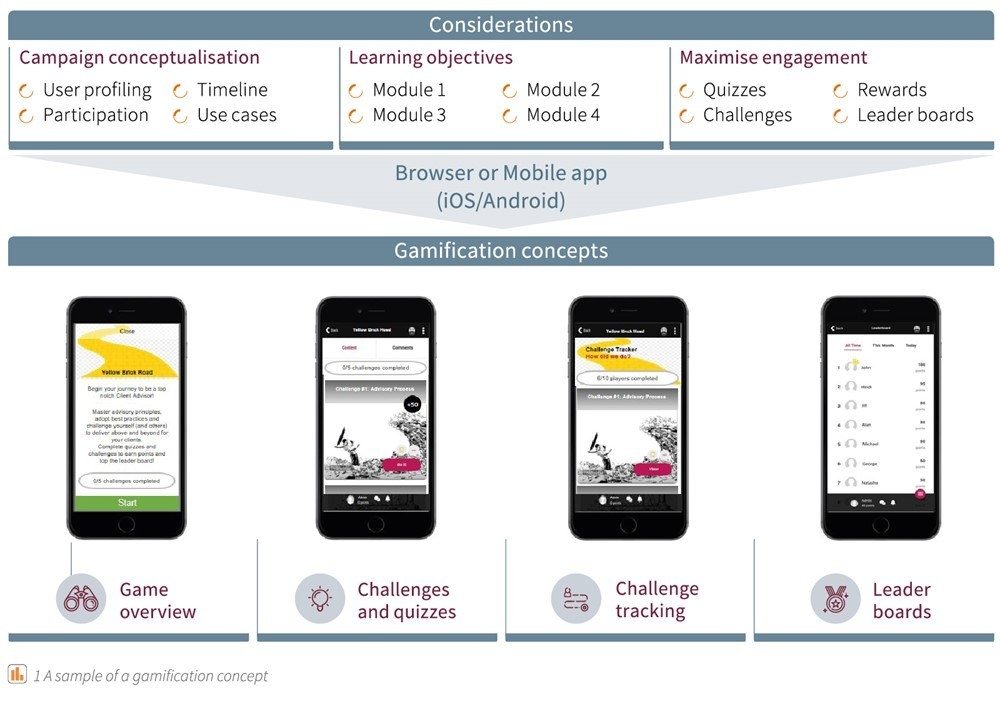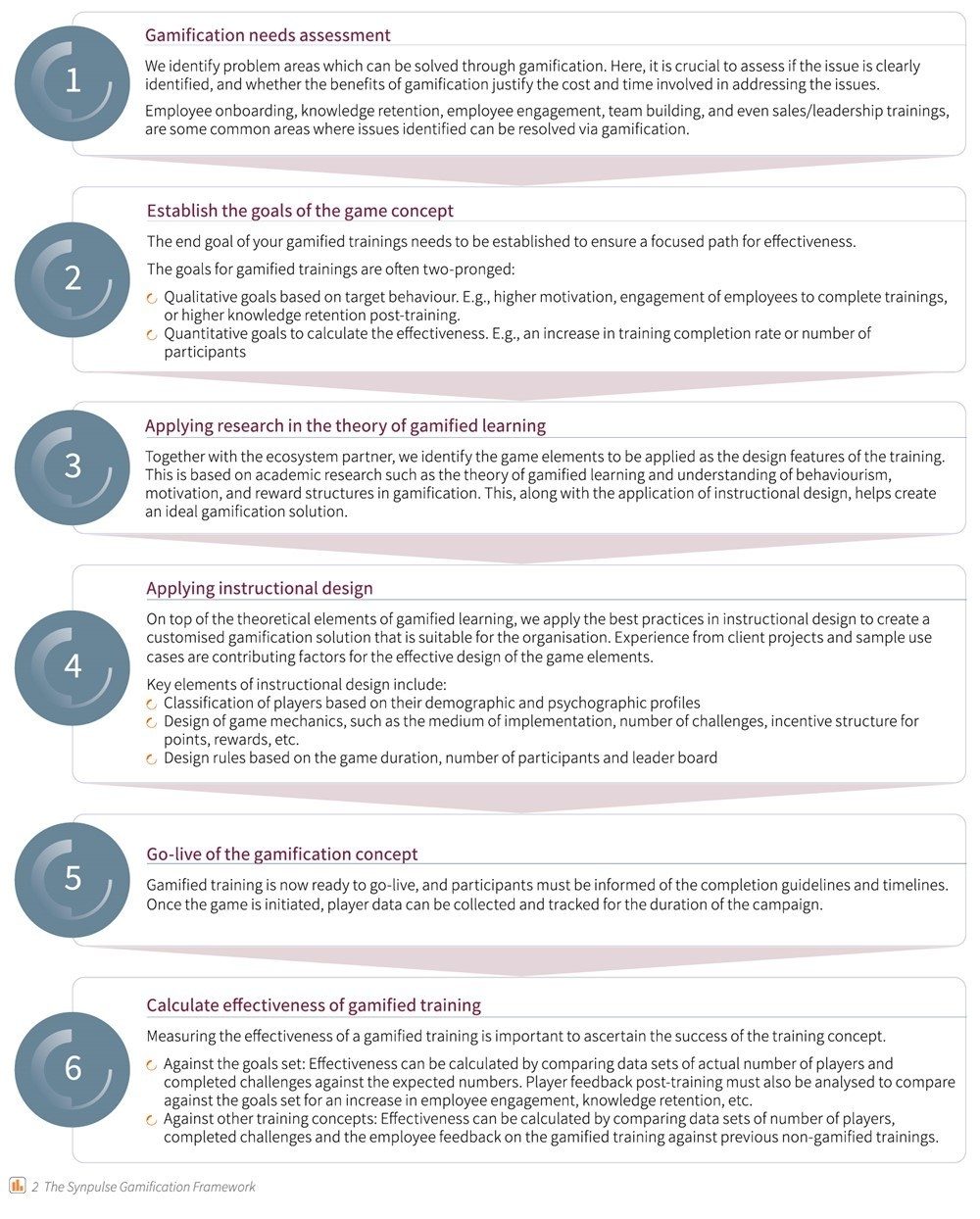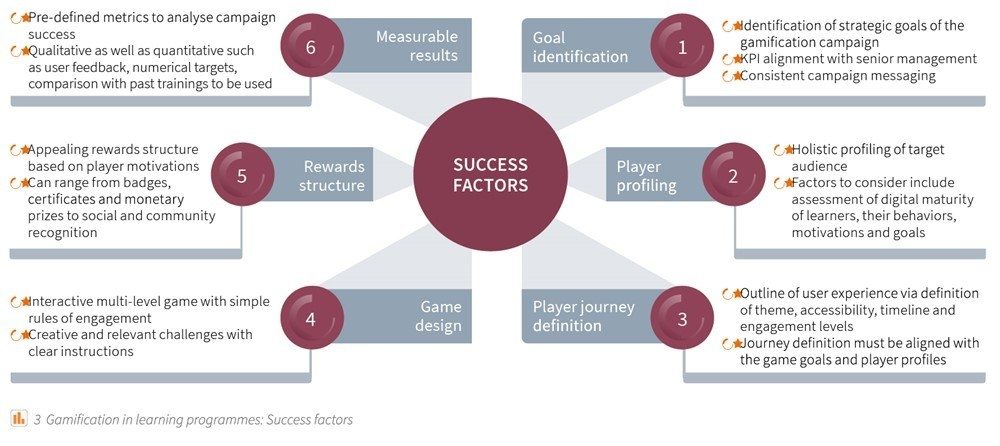A key challenge in the corporate learning environment today is the need to train employees on a new product or service within a short period of time, all while making it engaging and interactive. And one way to address this is through the innovative training approach of gamification.
What is gamification?
At the most basic level, gamification is the use of game elements and design techniques in a learning experience. Applied in non-game contexts, such as serving an objective of the company or learning a new work-relevant topic, it can trigger the competitive spirit of participants and make learning fun and engaging.
Game features, such as leader boards, are used to track performance, allowing participants to achieve goals in the form of badges or rewards, compete against other learners in the community, or simply get encouragement to perform better.
Gamification is not a new concept, but the recent rise of gamification has shown immense growth opportunities for corporate training. According to surveys by TalentLMS1 and AIHR Academy, more than 80% of employees across multiple organisations shared that gamified training motivates them to learn more. In fact, almost 90% of respondents said that it made them happier and more productive.
So, when do you use gamification for corporate trainings? Consider the following questions:
- Is your existing training outcome falling short of expectations?
- Do your learners share feedback that the training content is not or should be more engaging?
- Do your learners spend too much time on training?
- Is the current learning content not directly translating to training effectiveness?
If the answer to one or more of the above questions is “yes”, then gamification can be a good training method for your organisation.
How do banks make good use of gamification?
In an age where digital transformation is no longer a nice-to-have, but a must-have, many banks are undergoing large digitisation projects, where the key goal is to transform the business.
Training programmes are commonly used to champion a new system or simple process improvements. This often means creating a positive mindset amongst relationship managers or investment advisors to embrace the change. To do so, the pre-training engagements must be designed to instill awareness as well as foster curiosity and motivation to adopt the process change or new system.
However, cultivating this environment of anticipation for change is not a simple task. A refined gamification toolbox is crucial to make the transformation successful and trigger the trainees’ curiosity to discover the benefits of the new system or process in an interactive way.
Some examples of using the gamification toolbox in banking include:
- Game points disbursement. Promoting the use of an application by motivating users to collect points. Reaching levels based on the collected points will allow the trainees to redeem rewards, such as coffee vouchers from a nearby coffee place, as a low-points reward.
- Built-in quizzes. Trigger the users’ competitive spirit and measure their comprehension of the training content.
- Attendance tracking. QR code scanning at the entrance of the (virtual) training room allows participants to collect points and facilitators to check real-time attendance.
- Instant feedback. The application supports the classroom trainings via live polls and challenges, leading to an increased adaptability of the trainers during the session.
Social challenges. Knowledge is retained through the social and competitive elements included in the games. For instance, a photo challenge can lift the level of team spirit even in a virtual setup.

The Synpulse approach to gamification
At Synpulse, we have designed a framework to guide your gamification journey. The framework is an amalgam of our practical experience in gamified trainings and our knowledge from academic studies.
Our subject matter expertise allows us to tailor and accelerate your journey in meeting your training goals in the following steps:

The success factors for a gamification campaign
To implement a gamification campaign effectively, we have also identified six key factors that can contribute to its success. These factors highlight the fundamentals that are integrated into gamification campaigns to make them engaging and effective.

How can Synpulse help
With corporate learning as a key priority of many organisations and remote working becoming a new norm, gamification represents an opportunity to move beyond the walls of traditional training. The digitisation of your learning curriculum allows your employees to enjoy their training and move away from simply completing only the mandatory courses.
With a structured framework and key success factors in hand, our experts are with you every step of the way as you take that leap towards gamifying your training programme.
This article was authored by Nivedana Jalan (Senior Consultant), Susanne Fischer (Senior Consultant), and Ivy Neo (Consultant).
1TalentLMS. The 2019 Gamification at Work Survey. 19 August 2019.

